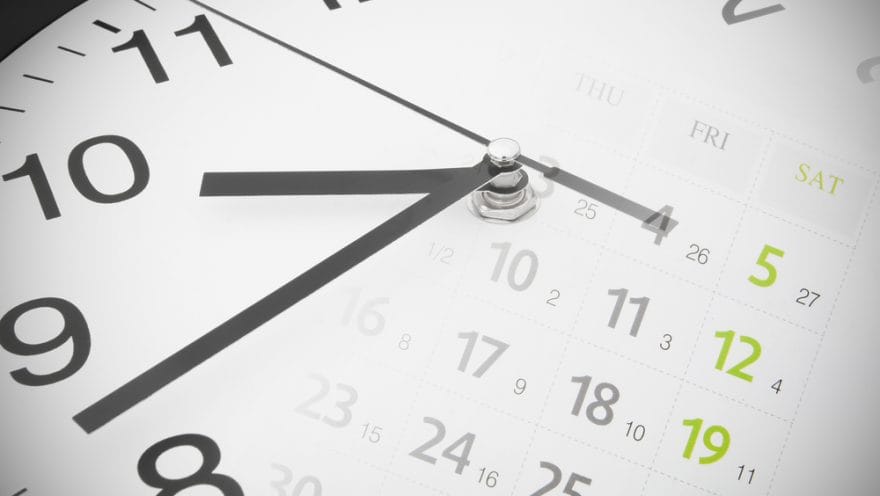Under current divorce rules, it takes about seven months to get a divorce – around 14 days to process the application, followed by a mandatory 20-week wait before applying for a conditional order, and then a further wait of 43 days to apply for the final order. However, these timeframes can be affected by court backlogs, which may cause delays in processing at various stages of the divorce.
Here’s a timeline of how long a divorce takes in the UK:
- Initial application: Around 14 days for the court to process your divorce application.
- Mandatory waiting period: You must then wait 20 weeks before you can apply for a conditional order (the first legal step to end your marriage).
- Conditional order: The court reviews your application, which usually takes a few weeks. Once approved, you’ll receive a certificate showing when it will be granted.
- Second waiting period: After receiving your conditional order, you must wait at least 43 days before applying for the final order.
- Final Order: The court typically processes this within 24-48 hours, though it can sometimes take longer. Once the final order is issued, you are legally divorced.
How long does it take to file a divorce application?
If you submit your divorce application online, it will be processed by the court, taking approximately 10-14 days.
You should then receive a notice confirming the application has been issued and a case number. You’ll also receive a copy of the application sealed by the court If you are a sole applicant, the court will also send a copy of the application form to your ex-partner.
If you send a paper application by post, it can take up to a month for your divorce to be issued. You will need to download a form from the Government website and send it to your local family court. If you are unable to print the form, you can request one from your local Citizen’s Advice Bureau.
Do I have to provide a reason for the divorce?
Since April 2022, you no longer need to give a reason for divorce. Previously, one partner had to blame the other – for example, for adultery, desertion, or unreasonable behaviour. Couples often had to agree on the wording, which could be time-consuming and slow down the process.
How long does it take to fill in a divorce application form?
The first step in applying for a divorce is completing the online application form. This requires the applicant to confirm that the marriage has irretrievably broken down and to state whether they are a sole or joint applicant (i.e. are you and your spouse doing the application together or are you applying alone).
The application must include both spouses’ names, contact details and their original marriage certificate or a certified copy. Before completing a divorce application, it is sensible to get legal advice from a solicitor.
The process of completing the online application might take anything from 15 minutes to an hour depending on your level of familiarity with online application forms and your ability to understand the legal questions being asked of you.
How long do you have to respond to a divorce application?
Divorcing couples can now apply for a divorce together (a ‘joint application’) or individually (a ‘sole application’).
For a sole application, the court will send an Acknowledgement of Service and a Notice of Proceedings to the spouse who did not make the application (the ‘respondent’). On receiving these documents, the respondent has 14 days to complete and return the Acknowledgement of Service.
If the respondent does not reply within 14 days, and the court is satisfied that the application was received, the divorce can still go ahead.
In a joint application, both parties will need to complete their details and agreement that the marriage has irretrievably broken down, with one party starting the process (normally online) and the other being prompted to confirm all details having set up their own online account.
How long does it take to get a conditional order?
Once the court has issued your divorce, you will have to wait a minimum of 20 weeks before you can apply for the conditional order. This 20-week period is intended to give time for reflection during which both parties can consider their current position and ensure that they wish to proceed with the divorce. It is also a time when the couple can make formal arrangements for the care of their children and division of family finances.
The conditional order, once issued, confirms that the court can find no reason why the parties should not obtain a divorce. You will then need to apply for a final order to complete your divorce.
How long does it take to get a final order?
Once the conditional order has been issued, the divorcing parties must wait a further six weeks until they are eligible to apply for the final order. It is generally advisable to wait until all financial matters — such as dividing assets, property, or pensions — have been resolved and formalised in a financial order approved by the court. Proceeding before financial issues are settled can complicate or limit your ability to resolve them later, although waiting for a financial agreement may extend the overall divorce timeline.
On receiving the final order, the divorce is legally binding and complete. A final order used to be called a Decree Absolute.
How long does a divorce financial settlement take?
When going through a divorce, couples will need to come to a financial agreement. This should include separating property, investments, shares, pensions and personal belongings as well as making arrangements for children.
The amount of time it takes to get divorced largely depends on how complicated the divorcing couple’s financial situation is. If you are able to agree to a financial settlement voluntarily in the form of a consent order, this will generally be much faster than if you need to apply to a court to decide on the division of finances with a court imposed financial remedy order.
How long does it take to make childcare arrangements during a divorce?
Child arrangements will usually need to be arranged quickly to provide certainty for your children. Ideally, these will be agreed through private negotiation or mediation and can often be sorted out between the couple themselves without any external input.
If a divorcing couple cannot agree on child arrangements, they’ll need to apply to a court for a child arrangements order. The process to obtain a child arrangements order varies slightly on a case-by-case basis. Typically, the first stage involves submitting an application to the court. The court will notify the other parent that an application has been made.
CAFCASS may carry out a background check on both partners with social services and the police. The next stage is for the parents to attend a preliminary court hearing. Depending on the case, further hearings may be required to finalise the details and make the child arrangements order legally binding.
In total, obtaining a child arrangements order can take anywhere from six months to one year, but sometimes much longer in more complicated cases.
Agreeing child arrangements through mediation is usually preferable and quicker than attending court, although not every case may be suitable for family mediation.
Is a joint divorce application quicker?
A joint divorce application may be quicker to initiate. For example, an Acknowledgement of Service is not required, which means that, once an application is issued, the 20-week waiting period for the conditional order can begin.
How long does family meditation take?
Family meditation refers to a process commonly used in divorce where a professional mediator supports families to arrange their finances and childcare. If families can negotiate these matters using a meditation process, they can avoid going to court.
Before divorcing couples can access family meditation, they will need to first attend a Meditation Information and Assessment Meeting (MIAM), which takes approximately 45 minutes. The aim of the session is to assess whether the case is suitable for mediation.
Some couples may be able to agree on their childcare arrangements and finances in one or two mediation sessions. Others may require more sessions.
How can I speed up the divorce process?
If you’re keen to get a quick divorce, we recommend you work with a divorce solicitor. A divorce and family lawyer can support you throughout your divorce from start to finish, ensuring that you do not run into any legal setbacks that slow down your application.
Divorce solicitors can offer support in various forms, including help with:
- Completing your divorce application
- Making sure you apply for the conditional order and final order promptly
- Guidance through family mediation services
- Legal help with financial and childcare arrangements
- Representation at court hearings if necessary
If you choose not to work with a divorce solicitor, it’s important that you research the divorce proceedings to ensure that you are aware of the deadlines and your legal obligations.
Misunderstanding your legal rights and responsibilities could seriously slow down the process and cause unnecessary delays.
What could slow down divorce?
There are a number of potential stumbling blocks which could slow down the divorce timeline. These include:
- The respondent not returning the Acknowledgement of Service
- Complex negotiations concerning finances and children
- Mistakes made in an application
- Court delays
Working with an expert divorce solicitor from the outset can help to minimise these potential delays.
Talk to Woolley & Co Solicitors about your divorce
At Woolley & Co, Solicitors, our expert divorce lawyers can offer specialist legal advice to guide you through a quick and stress-free divorce process. To take advantage of your free 30-minute consultation with an expert, local, family-law solicitor, call 0800 321 3832 or complete our quick online form.


